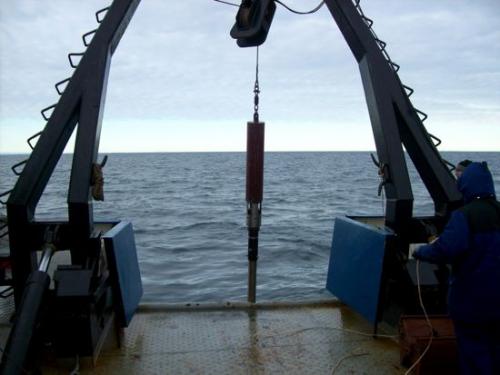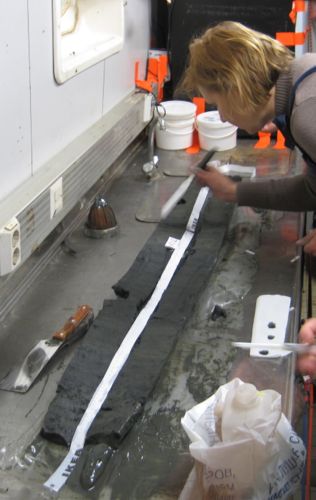Soon after leaving Nome, we encountered rough weather. Even when the skies cleared a bit, the wind and waves were often high enough to cancel stations. As we moved out of the Bering Strait and into the Chukchi Sea, we hit the northern edge of a large low pressure area that caused the weather to deteriorate even more. Throughout the day yesterday everyone pretty much stayed put, after tying down all gear and equipment, as the ship moved north in an effort to reach calmer seas and more northern stations. It's always a rule on board – keep one hand for yourself and one for the ship, but it's easy to forget when the seas are calm and often impossible when on deck working. Yesterday, no one was on deck and everyone held on inside when moving about. Even sleeping was tough; those with bunks parallel to the sides of the ship rolled side to side, while those perpendicular were constantly shifted head to foot throughout the night.
Toward morning things seemed to improve and we soon found out why. Since it was difficult to make forward progress without substantial pitching and rolling of the ship, a decision had been made to remain essentially in position and wait for the predicted better weather to arrive tomorrow. At that time, we will most likely return to the line of stations where we were unable to sample earlier.
We're currently on Leg 2 of the 2012 RUSALCA cruise; Leg 1 was a mooring cruise. During Leg 1, a much smaller team of scientists recovered 5 moorings that had been set out the previous year and deployed 5 new ones, all in US waters. With the exception of one day when they retrieved one of the mooring and the weather was similar to what we've been having, they enjoyed wonderful conditions throughout the cruise.
Update – later in the day we found that we were moving again as the weather had not improved. We were heading to a station where the Russian benthic team could get a grab. Despite some difficulties, they did get two cores and we started moving again to the next station, this one for geology. Since I'm writing this on the morning of the 5th, I can include a picture of the core they got from their gravity core apparatus. Once I've had a chance to talk with them, I'll let you know more about their work.




Comments